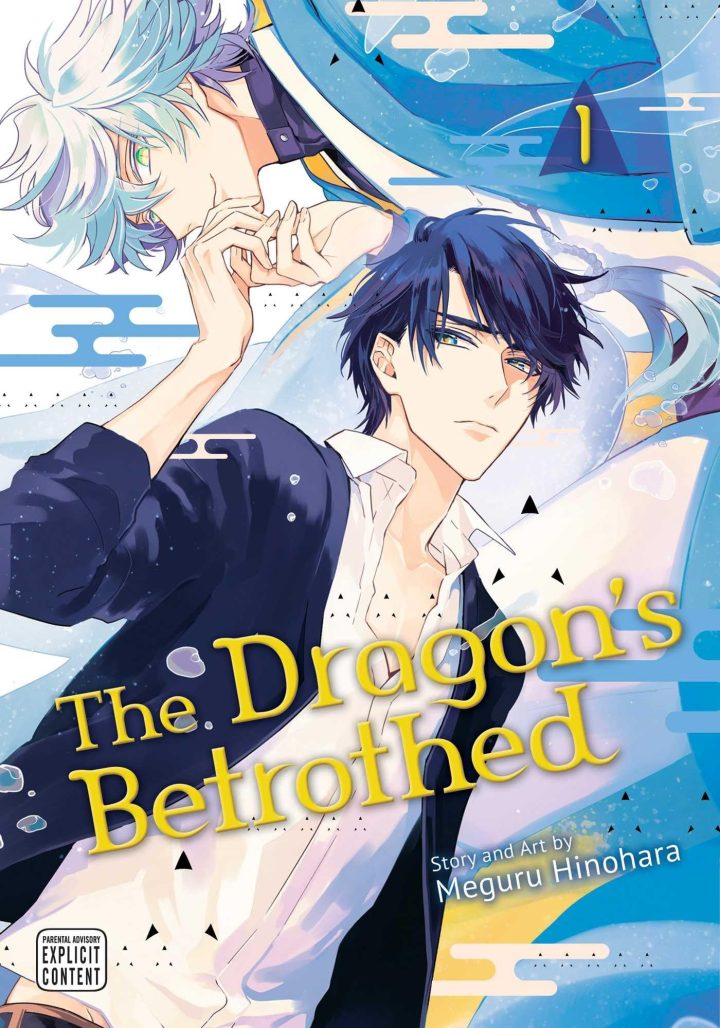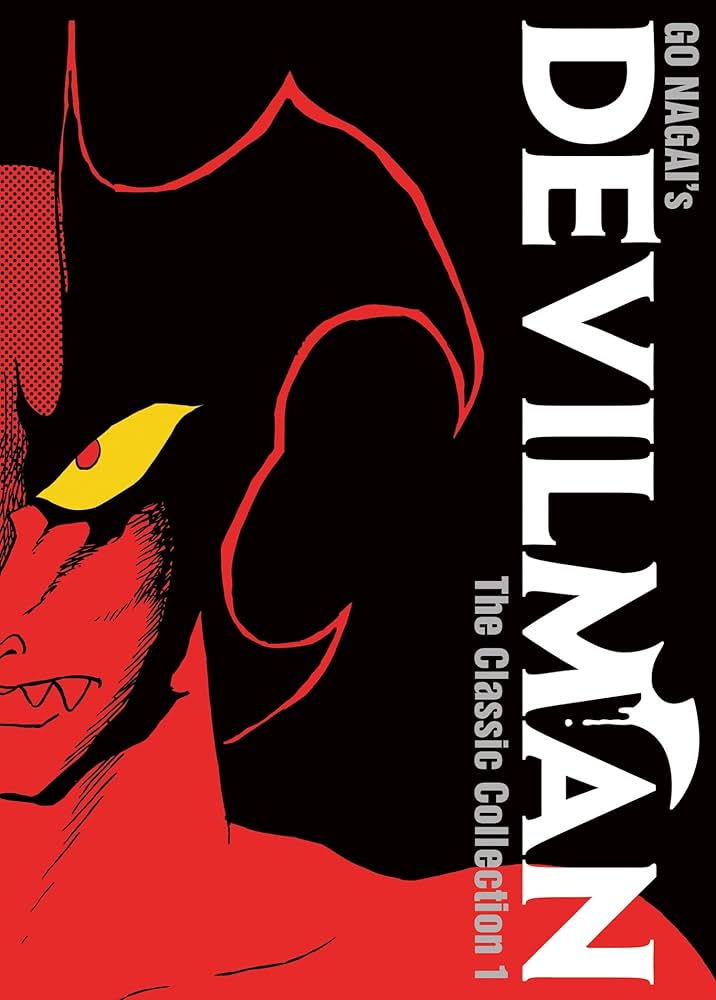With more people reading manga and Webtoons (aka vertical scroll comics) than ever before, Beat’s Bizarre Adventure gives three writers an opportunity each week to recommend some of their favorite books and series from Japan, Korea, and elsewhere. This week we have dragons, devils, and, of course, hot tips for future manga artists.

The Dragon’s Betrothed
Writer/Artist: Meguru Hinohara
Translation: Adrienne Beck
Publisher: SuBLime
Some time ago, I recommended Therapy Game by Meguru Hinohara. I’m back again this week for Pride Month with another one of her gems: The Dragon’s Betrothed, a fantasy BL about an author and a dragon.
Chiharu, a troubled writer, returns to his hometown where he lived with his grandmother. There he’s shocked to discover that his beloved grandmother promised him to the water dragon god Rin as his sacrificial bride. Rin isn’t a regular god–he’s clingy, kind of dopey, and will wait on Chiharu hand and foot (which includes cooking and cleaning.) But he is also very kind and sweet.
Chiharu doesn’t want to be some water god’s bride and tries to reject Rin; yet he can’t help but let this dragon god into his heart. Unfortunately, time is ticking away for Rin. If he doesn’t abide by the rules of his legend by taking Chiharu as his bride to the bottom of the spring, he will soon cease to exist.
At first it seems incredibly selfish for Chiharu’s grandmother to sign away his independence to a dragon god for a lifetime. As you read on, though, you Chiharu realizes that his grandmother recognized two lonely souls who needed each other.
There’s one particular moment in this story that stood out to me. During an intimate and pivotal scene in the second volume, Rin admits that he never believed one of his sacrificial brides would love him. Chiharu assures him that this time, it’s different. This isn’t him keeping a promise to his grandmother. This is him choosing Rin and loving Rin in every form. In that same scene, Rin’s hands flickers from large dragon claws to human hands. Chiharu is surprised by this and tells him that he didn’t mind it, reinforcing that he accepts Rin when so many of his other brides would have ran away in fear. But Rin explains that he wanted to hold Chiharu’s hand. It’s a beautiful moment of acceptance, compromise, and love.
The Dragon’s Betrothed only has two volumes out right now. It seems to be on hiatus as the author has turned her attention to Therapy Game. Hopefully I don’t have to wait as long as Rin for the next volume to come out. — Hilary Leung

Devilman
Writer/Artist: Go Nagai
Translation: Zack Davisson and Adrienne Beck
Lettering and Retouch: Bambi Eloriaga-Amago and Roland Amago
Publisher: Seven Seas
Go Nagai’s Devilman still shocks 50 years after its publication. Can you imagine what Japanese audiences thought of its violence and monstrosity back when it was serialized in 1972? Needless to say, the series remains a staple of stomach-churning superhero horror.
The premise is simple. High schooler Akira Fudoh reunites with his childhood friend Ryo, who reveals that a demon invasion will soon take place. The only way to stop it? Be possessed by demons, because only demons have the power to fight other demons. Akira and Ryo sneak into a Black Sabbath ritual, hoping they will become possessed. There, Akira is chosen by the ultra powerful and incredibly evil demon Amon. He transforms into the monstrous hero Devilman, which sure proves useful when the demon invasion begins and all hell breaks loose.
Already one of manga’s most infamous provocateurs, Go Nagai pushed the boundaries of what he could get away with even further here. Akira as Amon dispatches his enemies in brutal fashion, tearing their limbs and staining the battlefield with blood. There is also a lot of nudity. The Black Sabbath that opens the story is as sexual as it is violent.
Anyone unfamiliar with Nagai’s art may be in for a rude awakening. His draftsmanship isn’t nearly as polished as the likes of Osamu Tezuka, Shigeru Mizuki, or even fellow provocateur Kazuo Umezz. Nagai’s drawings are rough, his anatomy questionable, and yes, Devilman is frequently garish to look at. Yet that lack of polish allows the book to shock you in a way unique to Nagai. What he lacks in skill, he makes up for in pure expression.
(In one of the more interesting coincidences involving North American and Japanese comics, Jack Kirby created The Demon in 1972. It’s a comic about Jason Blood, a man who attends a magical ritual and learns he’s possessed by an ultra powerful demon. This demon uses his powers to face the forces of magical evil. While Kirby was not one to break taboos like Nagai, it’s fascinating to think of two luminaries on opposite sides of the world formulating similar ideas into two iconic comics characters but with vastly different results.) — D. Morris

Even a Monkey Can Draw Manga
Writer: Koji Aihara
Artist: Hitoshi Tomizawa
English Adaptation: Yuji Oniki
Touch-Up Art & Lettering: Susan Daigle-Leach
Book Design: Izumi Evers
Editor: Alvin Lu
Publisher: VIZ
Ah, manga. A wonderful medium that can accommodate any kind of story you can imagine. But if you read enough comics, you come to realize that many of them are the same. Plucky action stories about young boys defeating their rivals with the power of friendship, struggle and victory; sappy romances about girls winning over boys with a heart of gold; adult comedies about boys making out with a rotating cast of girls in pursuit of The One. Yet each new licensing announcement markets these repetitions on a theme as if they were all wholly unique. Why won’t anybody out there tell it like it is?!
Enter Even a Monkey Can Draw Manga, the tale of two manga artists who devote themselves to teaching you, the reader, how to draw bestselling comics. Ever wondered how to choose a pen name that wouldn’t embarrass you for life? The best way to draw an angry face? How to quickly come up with new ideas for stories? Koji Aihara and Hitoshi Tomizawa have the answers to all those questions and more.
There’s a level of cynicism to this series that may catch less jaded manga readers by surprise. Are you an artist who can’t draw? Just copy Katsuhiro Otomo, Aihara and Tomizawa suggest; that’s what everybody else does. How do you make readers care about your shojo romance manga? Make sure that your heroine cries at least three times every 24 pages, because that’s the magic number. Don’t even get these guys started on artistic merit. “You just want the establishment to accept your work as refined,” they say. “That’s all you want–is acceptance!! You’re just a slave to power!!”
Even a Monkey Can Draw Manga can be dated at times. This series was first published in Japan back in 1989, and most of its references are to old stars of manga like Ikki Kajiwara and Shigeru Mizuki. Much more information about these artists is now available in English today, versus when this series was first translated back in 2002. Still, I can’t imagine that a modern manga reader accustomed only to Shonen Jump would have an easy time. I’d love to see Aihara and Tomizawa return one day to take on the modern manga establishment.
Still, much of this book still rings true to me. Isn’t it funny how many of us remain invested in these often formulaic stories drawn as crude symbols on a deadline? Aihara and Tomizawa don’t just acknowledge this fact but relish it. The commercialism of manga, its utter shamelessness in pursuit of reader satisfaction, is also part of what makes it so appealing. God help us all.
The English localization of Even a Monkey Can Draw Manga is long out of print. The first volume now sells for nearly a hundred dollars on the used book market. If you’re lucky enough to find a copy, though, give it a read. You, too, can be one step closer to achieving your dream!! — Adam Wescott
Follow Beat’s Bizarre Adventure to get weekly manga and webtoon recommendations!

